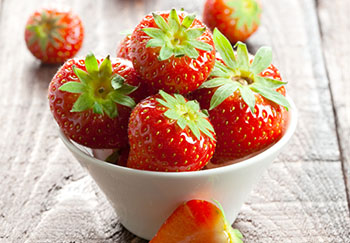Growing Your Own Strawberries at Home in Pots
July 6th, 2023 | Categories
Who doesn’t love strawberries? Up and down the country and the world over, people simply cannot get enough of these wonderful berries. Not only are they juicy with a wonderful flavour, but they are also versatile in their use whether it be enjoyed fresh off the vine, with a side of ice-cream, made into a jam, used for a tasty tart or pavlova and more! They’re also very good for us, being rich in potassium and vitamin C, and are even more nutritious when eaten freshly picked. Strawberries also come in a range of varieties noted for different subtleties in taste. From the classic Cambridge Favourite, to the plump Elsanta, to the wonderful Symphony, and many more we don’t have the space to list. No matter the variety, all will produce delicious berries to be enjoyed throughout the summer. They have lovely dainty white or pink flowers depending on the variety too, which pollinators love.
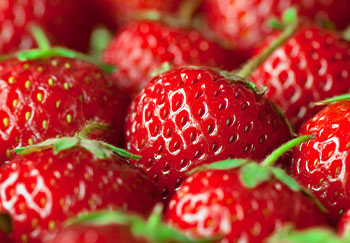
Why Grow Strawberries in Pots in the Garden?
Well, enjoying strawberries frequently is an expensive business. It can be £2 to £4 for just a small punnet from most supermarkets. If you like a regular supply, this is a cost that can mount up very quickly. Growing them at home will save you a good chunk of money over the course of several summers, because most strawberry plants will produce a good amount of fruit for years.
Another reason why you should grow strawberries if you enjoy them, is that it’s incredibly easy, much easier than you’d think. They can be grown in the ground, containers or hanging baskets. Sticking to containers for our guide, did you know that just a few pots will produce several large punnets in a single season when cared for correctly, and the ‘care’ part won’t take up much of your time either! They’re also quite a robust plant, surviving through some harsh winters and frosts to pop up again in spring.
The final reason to try; it’s fun! There’s a great sense of achievement growing your own produce, and when you see how much you can grow in even the smallest of spaces, you’ll be wondering why you never gave it a go sooner.
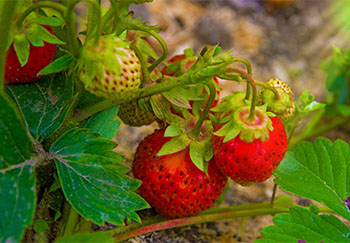
How to Start Growing Strawberries in Pots
To grow strawberries successfully in pots and containers in the garden, it pays to be prepared and know the nuances of pot growing and strawberry plant requirements, so you can maximise your harvest whilst minimising any issues and effort.
Strawberries are quite a hardy plant, but require plenty of sunlight, regular watering, and a good fertiliser.
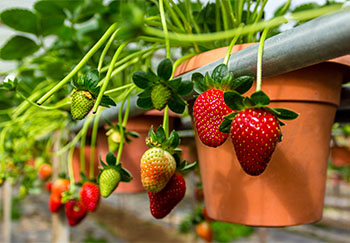
What You Will Need
Here are the essentials you’ll need for growing strawberries in pots at home. As you can see you don’t need a lot to get going:
Strawberries
For this guide, we are assuming and recommending you purchase young strawberry plants for easier and faster planting. They can be grown from seed, but bare root strawberry plants are also available too.
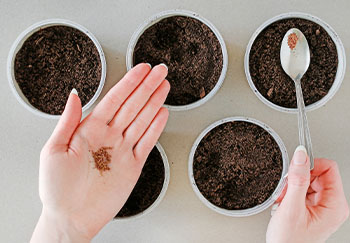
Pots and Containers
Strawberries need to be spaced roughly 20cm – 30cm from each other, so when buying your pots and containers, remember to think of these measurements, whether they are round pots or rectangular containers. Pots can be expensive, so if you want good yields then they don’t have to be fancy, cheap and functional will do, though you can purchase lovely terracotta pots with multiple tiered openings for strawberry plants to grow through.
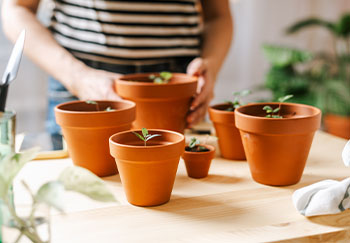
Multi-purpose Compost
No matter if strawberries are planted in the ground or in pots, they require a rich fertile soil or good quality compost with good moisture retention. Work out how many pots you will have, how many litres the pots hold, then buy enough compost to suit.
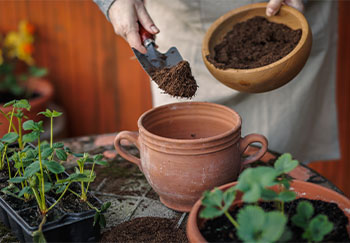
Mulch
Strawberries will benefit from a mulch around the plants such as straw, or mulch mats to keep moisture in the soil for longer. However, it’s better to use an organic option because this will slowly release nutrients over time, making the compost slightly acidic, which strawberries prefer.
Another benefit of mulch is it will keep the strawberries free from rot. When strawberries are on wet soil or compost for too long it can make them soggy and go off. A mulch will stop this from happening by acting as a nice barrier for them to rest on.
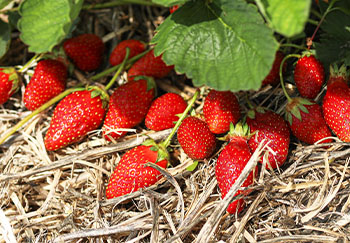
Tomorite Fertiliser or Equivalent
You’ve probably just thought; “that’s for tomatoes”, and you are right, but when the berries are starting to come, this kind of fertiliser has lots of good nutrients which will help in their growth and continued production.
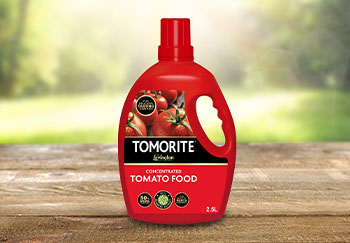
Watering Can
While you might have a hose or jug, a watering can will be better for applying your fertiliser. You’ll add it to the water in the can and mix around.
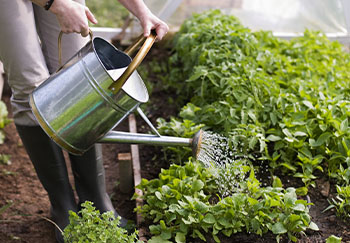
Secateurs
Good quality secateurs for pruning and cutting runners (more on these later). If you don’t have these already, buy them as they will come in handy for many tasks in the garden.
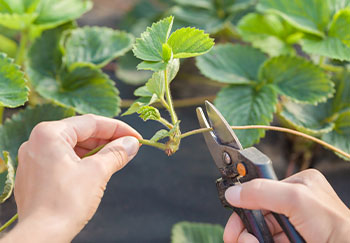
Hand Fork & Trowel
For forking over and digging out space in the compost. Like secateurs, if you don’t have these already, they are essential items that will be used time and again.
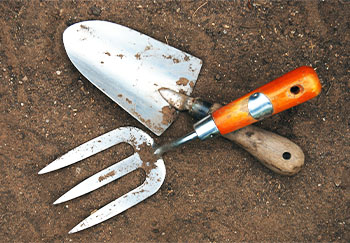
Some Stones
A few stones are a good idea placed at the bottom of pots to prevent the compost clogging up the drainage holes which can lead to overly wet waterlogged compost.
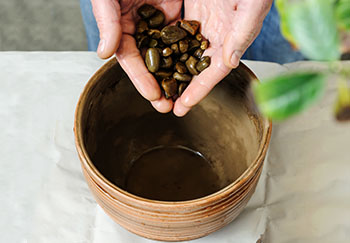
Soil Moisture Meter
Optional, but a fantastic way to avoid overwatering is to use a moister meter to tell you how wet, moist, or dry the compost is. This will help you to avoid overwatering which is one of the main reasons for young strawberry plants to fail.
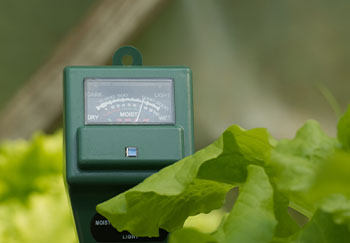
Pot Position, Compost & Mulch
Now that you’ve got everything, plan out where the pots are going to go. Strawberries are quite a hardy plant, but require plenty of sunlight, regular watering, and a good compost. Ensure they are placed in a sunny and warm spot, the more sun the better. They’ll also need sufficient water, drawn up through the soil, which can’t be waterlogged, so create drainage holes at the bottom of your pots (if they don’t have them already) to help prevent this. On very sunny days, water repeatedly as the soil can dry out quickly in just a few hours.
As mentioned, a good quality compost will hold water for longer and a mulch will prevent it from evaporating on very sunny and warm days, keeping your compost nice and moist for longer.
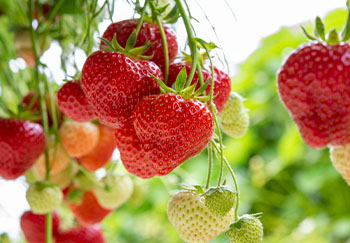
When to Plant Your Strawberries
Strawberries can be planted at any time throughout the growing season, but the most favourable times are in the early spring, or in late summer. When planting in early spring, depending on the weather conditions, there may be enough time for them to establish and produce some flowers which will then turn into lovely berries. Planting in late summer means you likely won’t get many flowers or fruit, but the plants will have longer to establish, therefore more flowers and berries should be produced the following year.
One thing to note is that all strawberry plants will crop better from their second year when they have had a good amount of time to establish routes and take in nutrients from the soil and your feeds.
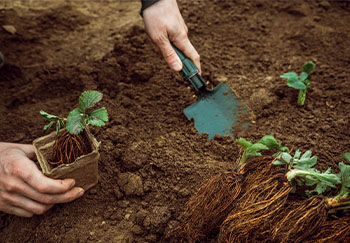
How To Plant Your Strawberries in Pots
The actual ‘how-to plant strawberries in pots’ is quite simple and fast. Just fill the pot up almost to the top with your compost, and plant your strawberries in, spacing them out accordingly for your size of pot and giving them the 20cm – 30cm they need.
Ensure your young strawberry plants are well watered before planting. Once they are, dig a hole or holes (depending on the size of your pot) wide enough in the compost with your trowel, taking care not to plant too deep (the top of the root should be seen just above) then gently firm in afterwards with the displaced compost.
Once complete, get your mulch and spread all around the plants over the top of the soil. Ensure a depth of a couple of inches for the best benefit leaving a little space of a few centimetres around the base of the plants.
Finally, water it all in well and that’s your first pot done!
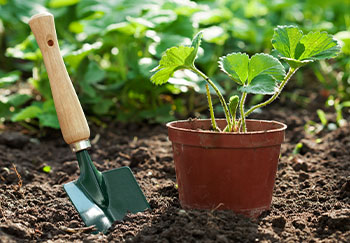
Watering and Feeding
Strawberries need a good, regular watering to keep the soil moist but not wet especially when fruiting. Depending on your area, this may even mean watering twice a day when it is extremely warm and sunny. Though a good mulch will help the compost retain moisture for longer. If you want to be certain when to water, pick up a soil moisture meter mentioned earlier to guide you.
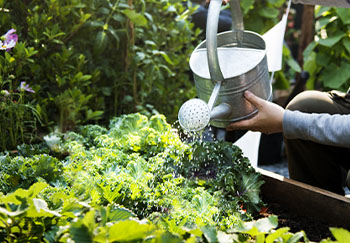
Runners
Strawberry plants will produce runners during the growing season. These are their attempt to spread out and grow more of themselves. Don’t worry though, this just means the plant is happy in the pot and has enough water and nutrients to do this. However, the strawberry plants can quite easily dedicate all resource to this, and if so, it means fewer flowers and berries. Just snip the runners as close to the base as you can with a clean pair of secateurs to encourage the plant to continue flowering and fruiting.
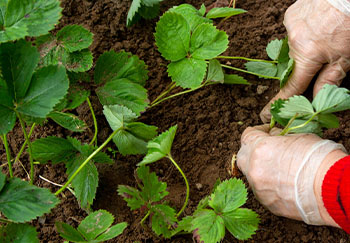
Harvesting
Strawberries will generally be ready to harvest from June to August. Once the strawberries begin to turn from green to red, it’s time to start checking back every day as they ripen quickly. When they are vibrantly red and slightly soft when squeezed that’s how you know they are fully ripe, either snip off your strawberries a little way up the stem with a pair of scissors or pinch with your finger and thumb to avoid bruising. Keeping the leafy top will allow them to last a little longer. Pick your strawberries at the warmest part of the day if you can, as this will ensure the best taste, and be prepared to eat them within a few days. Keeping them in the fridge will see them last a bit longer, and they can also be frozen, although this will change the flavour somewhat and can affect their shape. Best enjoyed and used fresh!
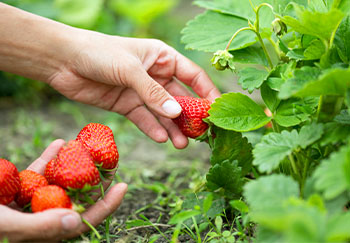
Pruning and Ongoing Care
Strawberries don’t need any special pruning, just remove any dead foliage when you see it. It does pay to trim away the old foliage though in the autumn when the growing season has finished. Besides that, just cut any runners away with a clean pair of secateurs during the growing season to keep the plants flowering.
In terms of ongoing care, they won’t need much watering in the autumn and winter months, unless its unusually dry of course.
In the winter they may need protection from frosts. The advantage of growing in pots means you can move them to a more sheltered position which will help, and is good generally when the windier, wet and cold weather comes.
Feed in early spring with a general fertiliser when the temperatures start to pick up.
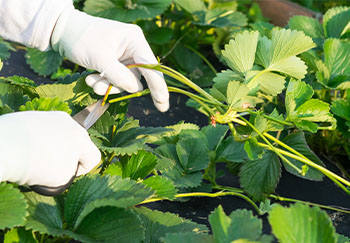
Enjoy Your Home-Grown Strawberries
So there you have it, it doesn’t seem so hard to grow your own strawberries at home does it? Whether you’re thinking about growing them in a pot on your balcony, or on the patio in your back garden, they’ll tolerate most conditions, and the beauty of pot growing any fruit or veg is that they can be moved if necessary. The first year will be mostly about care and letting them establish, however into the second, third, and fourth years – when cared for correctly – you’ll have an established plant that produces an abundance of amazingly fresh and tasty fruit to enjoy, while saving money too.
